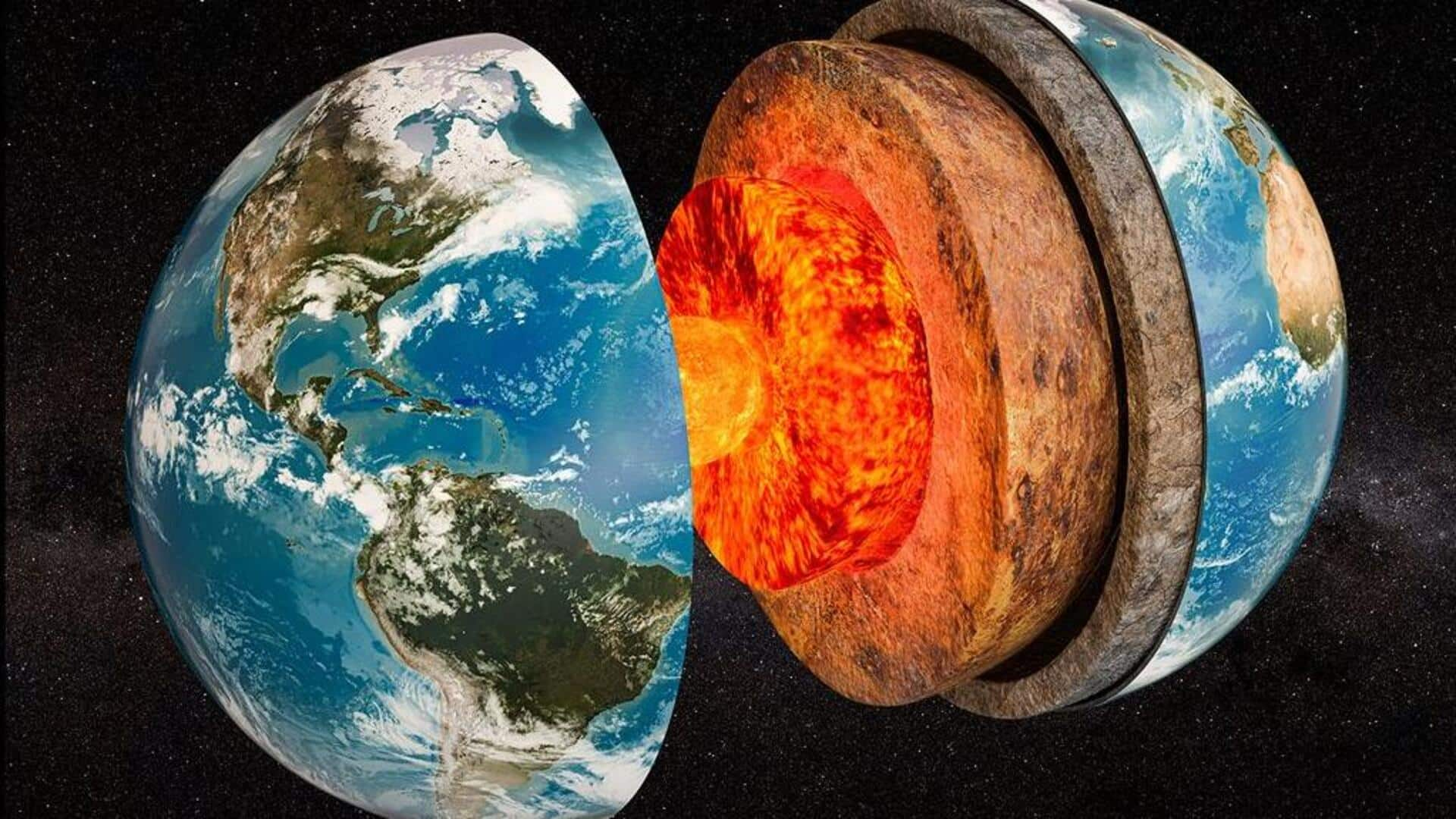
Earth's first crust was surprisingly similar to today's composition: Study
What's the story
A new study has revealed that Earth's earliest crust, called the protocrust, looked eerily similar to our present-day solid rock shell.
The finding could potentially upend theories on how Earth's surface evolved from a layer of molten magma to the tectonic plates we live on today.
The research was conducted by an international team that included Macquarie University geochemist Simon Turner in Australia.
Element absence
The niobium anomaly
Turner and his team were looking for a chemical signature in Earth's oldest crust: the absence of niobium.
This element is usually present in rocks at subduction zones, where one tectonic plate slides under another.
It was thought that continental plates started colliding when low levels of niobium were detected in geological records, suggesting a change in crust composition over time.
Research methodology
A new approach to Earth's crust composition
To study the make-up of Earth's first solid rock layer, Turner and his team employed mathematical models.
Their results indicated that niobium would have been pulled toward Earth's core, without plate tectonics.
This means that the formation of continental crust may have been a key part of early layer formation on Earth, instead of a later occurrence.
Crust composition
Earth's crust has retained its original chemical signature
Turner's hypothesis was further supported by the behavior of other siderophile elements in their model.
These are elements attracted to iron, such as that found in Earth's core during its formation.
Over billions of years, it seems continental crust has retained this original chemical signature.
It was less influenced by the intense bombardment of meteorites around 3.8 billion years ago, which altered Earth's mantle composition.
Scientific implications
A new perspective on Earth's geological history
"This discovery completely changes our understanding of Earth's earliest geological processes," Turner said.
He also hinted that this research could give a new insight into how continents might form on other rocky planets across the Universe.
Published in the journal Nature, the study presents an interesting alternative view on Earth's early development and its possible implications for other planets.